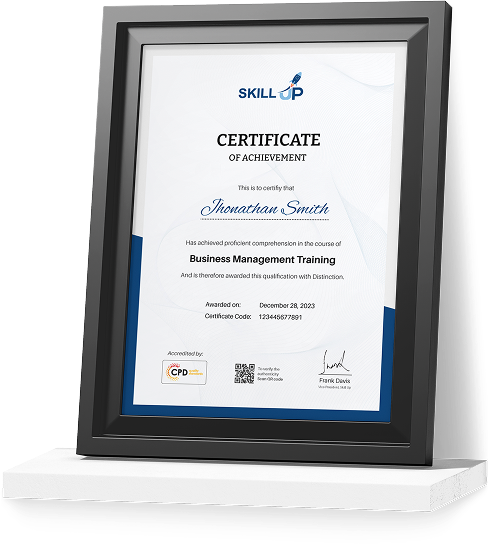 Teaching Phonics Course
Teaching Phonics Course
Teaching Phonics Course is designed to provide structured knowledge on phonics instruction, enabling learners to support children in reading development confidently. Covering phonics basics, Jolly Phonics, phonemic awareness, word families, and strategies for dyslexic learners, this programme also addresses working with parents and phonics assessments. Whether through phonics training for early years, phonics training for teachers UK, or phonics courses for teaching assistants, this structured study prepares participants for both classroom and one-to-one teaching. Delivered as a teaching phonics course online, it is equally beneficial for beginners and adults seeking structured phonics training courses.
 Course Description
Course Description
Learning to read is the foundation of education, and phonics is the key that unlocks literacy for children of all abilities. This teaching phonics course equips learners with effective strategies to introduce the alphabet, develop phonemic awareness, and build confidence in reading. Through modules such as “Phonics in a Flash” and “Playing the Phonics Game”, the course demonstrates how to make phonics engaging and effective for children in classrooms or at home.
The programme goes beyond basics by introducing advanced approaches like Jolly Phonics and tools to help dyslexic pupils who struggle with phonics. Moreover, guidance on the Year 1 Phonics Screening Check ensures participants can measure pupil progress accurately. Learners will also explore how to collaborate with parents, making phonics a joint effort both inside and outside school.
This is one of the most sought-after phonics training courses for adults because it adapts to diverse contexts—whether you are seeking phonics training online, phonics training for early years, or professional phonics training for teachers UK. By the end, you will be prepared to inspire children with reading success while advancing your career with recognised expertise in phonics education.
 Learning Outcome
Learning Outcome
- Apply multiple phonics methods including Jolly Phonics to improve literacy instruction.
- Support children with dyslexia and other reading difficulties using targeted phonics strategies.
- Conduct phonics assessments and Year 1 Phonics Screening Checks confidently.
- Strengthen engagement by teaching phonics through games, flashcards, and interactive activities.
- Build positive collaboration with parents to extend phonics learning beyond the classroom.
 Who Is This Course For?
Who Is This Course For?
- Teaching assistants interested in phonics courses for teaching assistants.
- Early years educators looking for phonics training for early years.
- Qualified teachers searching for phonics training for teachers UK.
- Parents or carers wanting phonics training courses for adults.
- Individuals seeking flexible teaching phonics course online options.
 Certificate of Achievement
Certificate of Achievement
Earn Your Accredited Certificate with Transcript
Save 20% with the coupon code SKILL20

Show Your Certified Identity with a CPD-QS Certificate
Perfect for employers, clients, or academic verification.

 Career Path
Career Path
- Primary School Teacher – Deliver phonics-based literacy education in classrooms. Average Salary: £40,000 – £52,000/year.
- Early Years Teacher – Teach foundational phonics in nurseries and reception settings. Average Salary: £41,000 – £50,000/year.
- Literacy Specialist – Focus on phonics and reading interventions. Average Salary: £43,000 – £55,000/year.
- SEN Teacher – Support dyslexic and SEN pupils with tailored phonics instruction. Average Salary: £42,000 – £56,000/year.
- ESL Teacher – Use phonics to teach English to non-native speakers. Average Salary: £40,000 – £54,000/year.
- Phonics Trainer/Consultant – Provide phonics training for teachers UK and early years settings. Average Salary: £45,000 – £60,000/year.
 Frequestly Asked Questions
Frequestly Asked Questions
The best way to teach phonics is through a systematic, synthetic approach that builds children’s reading skills step by step. Many schools in the UK use structured programmes such as Jolly Phonics or Letters and Sounds. Effective phonics training for teachers UK recommends blending letter sounds, segmenting words, and applying phonics in real reading contexts. Using games, flashcards, and phonics songs also makes the teaching phonics course online methods engaging for children.
The steps of teaching phonics usually start with letter-sound correspondence, followed by blending sounds to read words, segmenting words into sounds, and then applying these skills in sentences. UK phonics courses highlight gradual progression—from teaching single sounds to digraphs, trigraphs, and word families. Structured phonics training for early years ensures children build confidence in each stage before moving on.
In the UK, the Letters and Sounds framework sets out seven phases of phonics:
Phase 1: Developing listening skills.
Phase 2: Introducing simple sounds and letters.
Phase 3: Digraphs and more complex sounds.
Phase 4: Blending consonant clusters.
Phase 5: Alternative spellings for sounds.
Phase 6: Spelling rules and patterns.
Phase 7: Advanced reading fluency (used in extended practice).
Learners completing a teaching phonics course or phonics courses for teaching assistants gain full exposure to these phases.
The five principles of phonics are:
Teaching the relationship between sounds and letters clearly.
1. Building from simple to complex sounds.
2. Encouraging blending and segmenting for reading and spelling.
3. Repeating and reinforcing through practice.
4. Applying phonics knowledge in real reading activities.
These principles are central to phonics training courses for adults and phonics training online in the UK.
The correct order to teach phonics begins with single sounds, then moves to digraphs (like ‘ch’ and ‘sh’), trigraphs, and longer word patterns. In UK classrooms, teachers follow a progression that starts with simple CVC words (consonant-vowel-consonant), then blends, clusters, and finally spelling rules. A teaching phonics course online ensures educators follow this sequence consistently.
The 5 finger approach is a simple way for children to choose books at the right reading level. They read a page and hold up a finger for each word they cannot decode. If they struggle with more than five words, the book is too challenging. This method is taught in phonics training for teachers UK and phonics training for early years to help children develop reading independence and confidence.
Curriculum
-
Introduction to Teaching Phonics
00:45:00
-
Phonics Basics
00:30:00
-
Methods to Teach Phonics – Jolly Phonics
00:30:00
-
How to Start with Phonics?
00:30:00
-
Phonemic Awareness
00:15:00
-
Teaching Children Word Families
00:30:00
-
PHONICS, READING AND GPS
00:30:00
-
A Glossary of Phonics Terms
00:15:00
-
Year 1 Phonics Screening Check
00:30:00
-
When Dyslexic Students Struggle with Phonics
00:30:00
-
Teaching the Alphabet
00:30:00
-
Working with Parents to Teach Phonics
00:45:00
-
Ways to Boost Phonics Confidence
00:30:00
-
Phonics in a Flash
00:15:00
-
Playing the Phonics Game
00:30:00
-
Teach Phonics to ESL Students
00:30:00
-
Phonics Assessments Guide
01:00:00
-
Mock Exam – Teaching Phonics Course
00:20:00
-
Final Exam – Teaching Phonics Course
00:20:00
Offer Ends in

-
Duration:9 hours, 25 minutes
-
Access:1 Year
-
Units:19



.png) 1 Reviews
1 Reviews 125 Students
125 Students
 All
Courses for £49
All
Courses for £49


